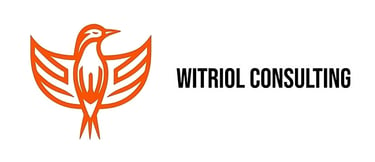How Small Businesses Can Effectively Prepare for a Major Expo
Participating in a major expo can be a game-changer for small businesses. Whether you're launching a new product, looking for industry partners, or aiming to expand brand visibility, expos offer an unparalleled opportunity to connect with potential clients, collaborators, and investors. With the right preparation, small business owners can maximize expo presence, drive meaningful engagement, and create long-term value. This comprehensive guide covers everything you need to know about small business expo preparation—from defining your goals to measuring post-event success.
MICROSOFTEQORGANIZATIONMENTORCOMMAND ECONOMYSTRATEGIC PARTNERSHIPSMANAGEMENT CONSULTINGTRADITIONAL ECONOMYMERGERSMARKET ECONOMY8(A)CONSULTINGGROWTHLEADERSHIPSTRATEGYCLIENT RELATIONSHIPSSUSTAINABLE GROWTHECONOMICSFEDERAL CONTRACTINGGOVERNMENT CONTRACTSMARKETING STRATEGYCLOUD COMPUTINGTRAININGCREATING VALUETECHNOLOGYCLIENT RELATIONSHIPSEMOTIONAL INTELLIGENCETIME MANAGEMENTFEDERAL CONTRACTS
Shaun Witriol
6/30/20253 min read


How Small Businesses Can Effectively Prepare for a Major Expo
Introduction
Participating in a major expo can be a game-changer for small businesses. Whether you're launching a new product, looking for industry partners, or aiming to expand brand visibility, expos offer an unparalleled opportunity to connect with potential clients, collaborators, and investors. With the right preparation, small business owners can maximize expo presence, drive meaningful engagement, and create long-term value.
This comprehensive guide covers everything you need to know about small business expo preparation—from defining your goals to measuring post-event success.
1. Understanding Your Goals
Every successful expo strategy begins with clear and measurable goals. Are you attending to:
Generate leads?
Launch a product?
Build brand awareness?
Secure distribution partners?
Conduct market research?
Tips to Define Your Expo Objectives:
Set SMART goals (Specific, Measurable, Achievable, Relevant, Time-bound).
Identify key metrics (e.g., number of leads collected, meetings booked, samples distributed).
Align expo goals with broader marketing and sales objectives.
Establishing your "why" will shape your entire expo strategy and ensure a more targeted approach.
2. Researching the Expo
Before you invest time and money, thoroughly research the expo to ensure alignment with your target market.
Key Elements to Research:
Expo theme and focus (industry, technology, trends)
Attendee demographics and key decision-makers
List of exhibitors and potential competitors
Notable speakers and panel discussions
Networking events or sponsored meetups
Understanding these factors helps you tailor your messaging and marketing to resonate with the audience attending the event.
3. Creating an Effective Expo Strategy
Once your goals and research are locked in, develop a detailed expo strategy that covers:
Strategic Tips:
Assign roles for your team (who handles demos, lead capture, booth setup, etc.)
Create a pre-expo outreach campaign (email, LinkedIn, phone calls) to schedule meetings
Develop an expo calendar to track speaking sessions, demos, or key networking windows
Identify competitors and develop differentiators you can highlight at the event
Planning ahead positions your team to operate with confidence and clarity.
4. Preparing Your Marketing Materials
Your marketing collateral must be professional, clear, and compelling. It should capture the essence of your business and make a strong impression.
Must-Have Marketing Materials:
Branded brochures and flyers that summarize your value proposition
Business cards with updated contact info and branding
Promotional items (pens, tote bags, lanyards) with your logo and website
Product one-sheets or demo guides
A compelling pitch deck or presentation if you’re doing demos
Ensure consistency in design, language, and branding across all materials. This strengthens your business's image and credibility.
5. Optimizing Booth Design and Setup
Your booth is the face of your business at the expo—make it count!
Booth Best Practices:
Use bold signage and professional banners to communicate your offering in seconds
Incorporate product displays or interactive elements (touchscreens, demos)
Provide comfortable meeting space (chairs, table) for in-depth discussions
Keep a clean, well-lit, and welcoming booth environment
Include branded backdrops, lighting, and design elements that reflect your brand identity
An inviting booth draws attention and encourages meaningful engagement.
6. Leveraging Technology for Engagement
Technology can significantly boost your efficiency and visibility at the expo.
Useful Tech Tools:
Lead capture apps to scan badges and take notes
Tablets or monitors for virtual demos and product displays
QR codes linking to your website, product catalog, or booking form
Social media to live-post updates, contests, or behind-the-scenes content
Use the event app to message attendees, track schedules, and increase your exposure
Pro tip: Post pre-event content to generate excitement and encourage booth visits.
7. Effective Communication Techniques
Once attendees approach your booth, how you engage matters.
Master the Art of Booth Conversations:
Prepare a concise elevator pitch that communicates who you are and what you do
Practice active listening and ask open-ended questions
Be approachable and authentic
Reinforce your value proposition without overwhelming them with jargon
Train your team on body language, tone, and eye contact
Great conversations can be the difference between a walk-by and a partnership.
8. Networking Best Practices
Expos are about more than just attendees—they’re a goldmine for new partnerships.
How to Network Effectively:
Attend happy hours, dinners, and speaker panels
Introduce yourself to neighboring booths
Use LinkedIn to connect with attendees before and after the event
Join relevant roundtables and breakout sessions
Post-Expo Follow-Up Tips:
Follow up within 48 hours with personalized messages
Include a thank you, reference to your conversation, and a clear next step
Add contacts to your CRM or email nurture campaigns
Staying top-of-mind after the expo is key to converting contacts into contracts.
9. Measuring Success Post-Expo
After the dust settles, it’s time to assess whether the event met your goals.
Important Metrics to Track:
Number of qualified leads generated
Number of follow-up meetings scheduled
Partnerships formed or collaborations initiated
Booth traffic (tracked via lead app or QR scans)
Social media engagement from the event
Revenue generated directly or indirectly from the expo
Use these insights to improve your strategy for future events and justify the ROI.
Conclusion
With the right preparation, small businesses can turn any expo into a powerful platform for exposure, growth, and partnership. From setting goals and designing your booth to leveraging tech and building connections, each step plays a role in expo success.
The key? Plan early, stay focused, and engage with purpose.
Visit us at www.witriolconsulting.com or email shaun@witriolconsulting.com to schedule a strategy session.
Like and follow Witriol Consulting on LinkedIn, Instagram, Facebook, and YouTube for more insights and strategies on effective leadership and time management
Current Certifications
Small Local Business Enterprise (SLBE) - (San Diego)
Local Small Business Enterprise - (LSBE) - (Los Angeles)
Minority Owned Business (MBE) - (San Diego and Los Angeles, Federal)
Small Business (Micro) - (California)
Disadvantaged Business Enterprise - (California, Arizona, Oregon, Hawaii)
Small Disadvantaged Business - (Federal)
Asian Pacific Business Enterprise - (Federal)
Pending Certifications
8a - (Federal)
© 2024. All rights reserved.


certifications
consultations
